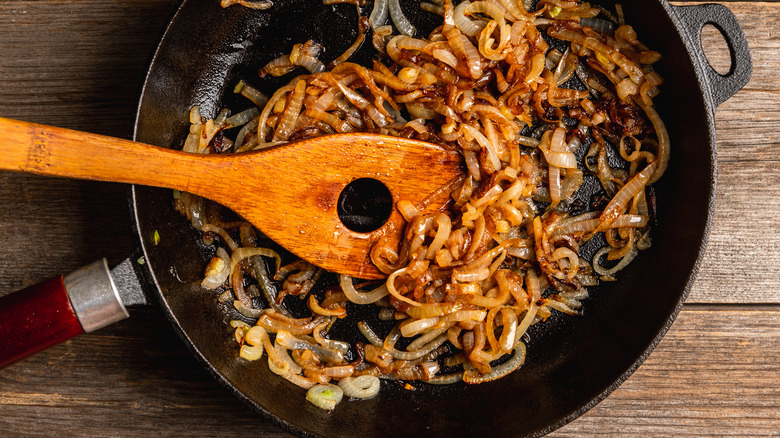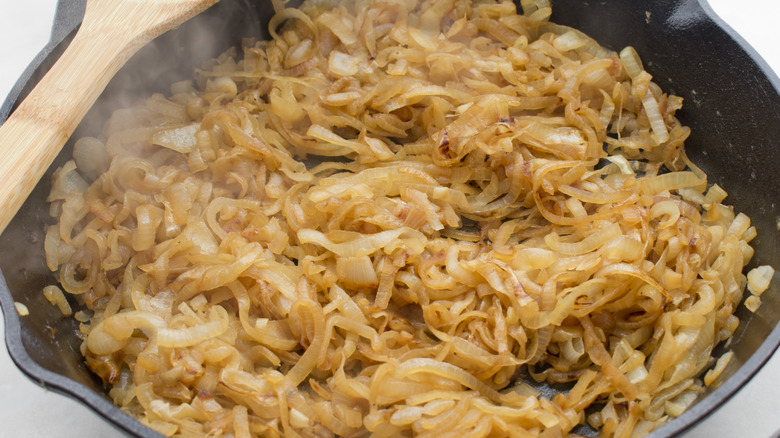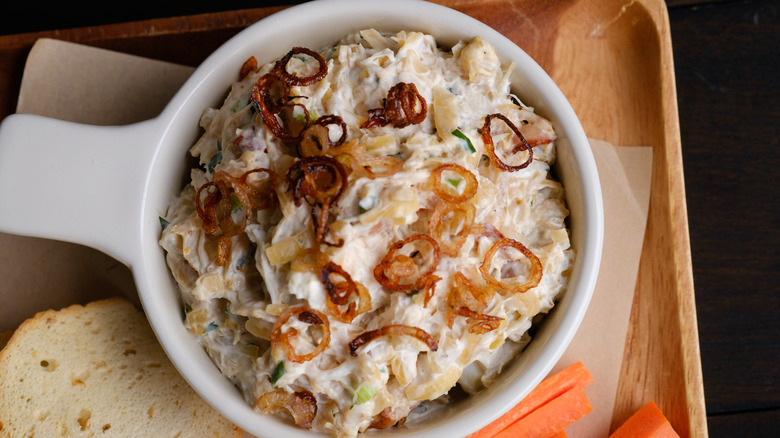The Biggest Mistake You're Making With Caramelized Onions
Onions, that marvelous root vegetable, are the mainstay and backbone of many savory recipes, including soups, stews, casseroles, sandwiches, and condiments. Pungent and assertive when first peeled and cut, onions can be softened and tamed when cooked, helping add a sweetness and rounded depth to your food.
While everyone has sautéed an onion or two in their time in the kitchen, not many people have properly caramelized onions. And the word "caramelize" is correct, per Masterclass. Those brown and sweet onions have gone through the process of caramelization — a technical food science term — in their time on the heat. The sugars in the onion are broken down and then recombined on the stovetop, helping produce hundreds of new compounds that create that characteristic sweet, savory, and smoky flavor, according to Science Notes.
Caramelizing onions may seem simple, but the process has more pitfalls than you think, making it easy to get wrong. For instance, the onions can burn, or they may not get brown enough for the best flavor, which is the biggest mistake of all.
Slow down!
The best tip is to simply slow down. Caramelization takes time; far more than you think. For the best brown and sweet caramelized onions, they should be on the stovetop for at least 45 minutes, which means using low heat.
For best results, combine butter and olive oil in a shallow large pan as the larger surface area of a big pan will ensure that your onions will caramelize instead of steam. Put the pan on medium-low heat, and keep it there — don't be tempted to turn the heat up. Next, add the onions, which should be cut or sliced about 1/4-inch thick, per Chef Works. Finally, stir and let the onions go.
Eventually, they will start to soften and turn translucent. In other words, they will look just like the onions you sauté, but as they continue to cook, the volume will reduce as the water in the onions evaporates, and they will start to brown. At this point you must pay attention. It's important to stir the onions often so the pieces on the bottom don't burn along with scraping the bottom of the pan, according to Food & Wine. After about half an hour the onions will be a light golden brown, which is a sign to keep going! When the onions are a deep golden brown, about the color of mahogany, add liquid to deglaze the pan and scrape up all the good bits, per BBC Good Food. Stir, scrape, and simmer until the liquid is absorbed, then get them off the heat and into a container.
Use those sweet, sweet onions
After your careful work, you'll be happy to know that you can freeze the caramelized onions, according to Lifehacker. Freeze them in small portions, about 1/4-cup each, so you can drop them into stews or heat on the stovetop to top sandwiches or burgers. Like all other cooked foods, onions will keep fresh for about four days in the fridge, per the FDA.
If you can stop yourself from eating them straight out of the container with a spoon, the next step is to use them. Try making the best appetizer ever: caramelized onion dip (stir in some bacon or crabmeat for real decadence). Add them to eggs for a fabulous breakfast of caramelized onion and parmesan frittata. You can attempt a gorgeous beet pizza with caramelized onions and goat cheese, or wake up your taste buds in the morning with sweet chili caramelized onion breakfast tacos. And to really impress your guests when entertaining, whip up a pear, gorgonzola, and caramelized onion galette.


